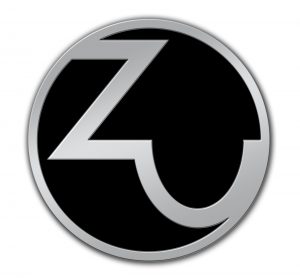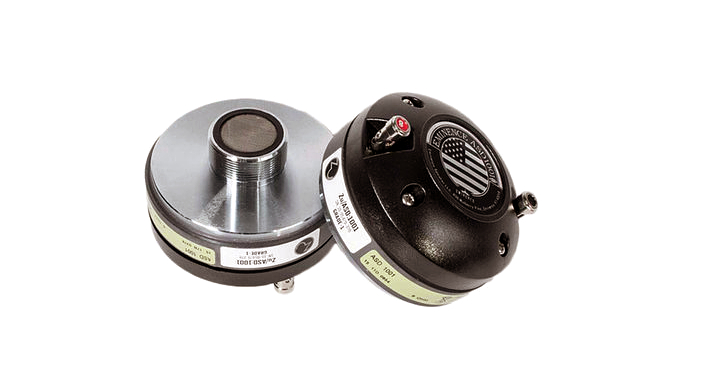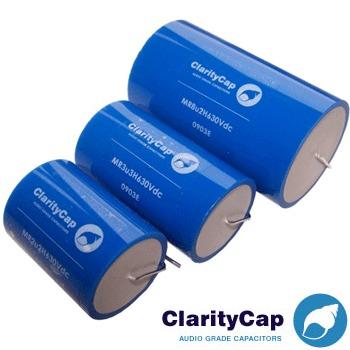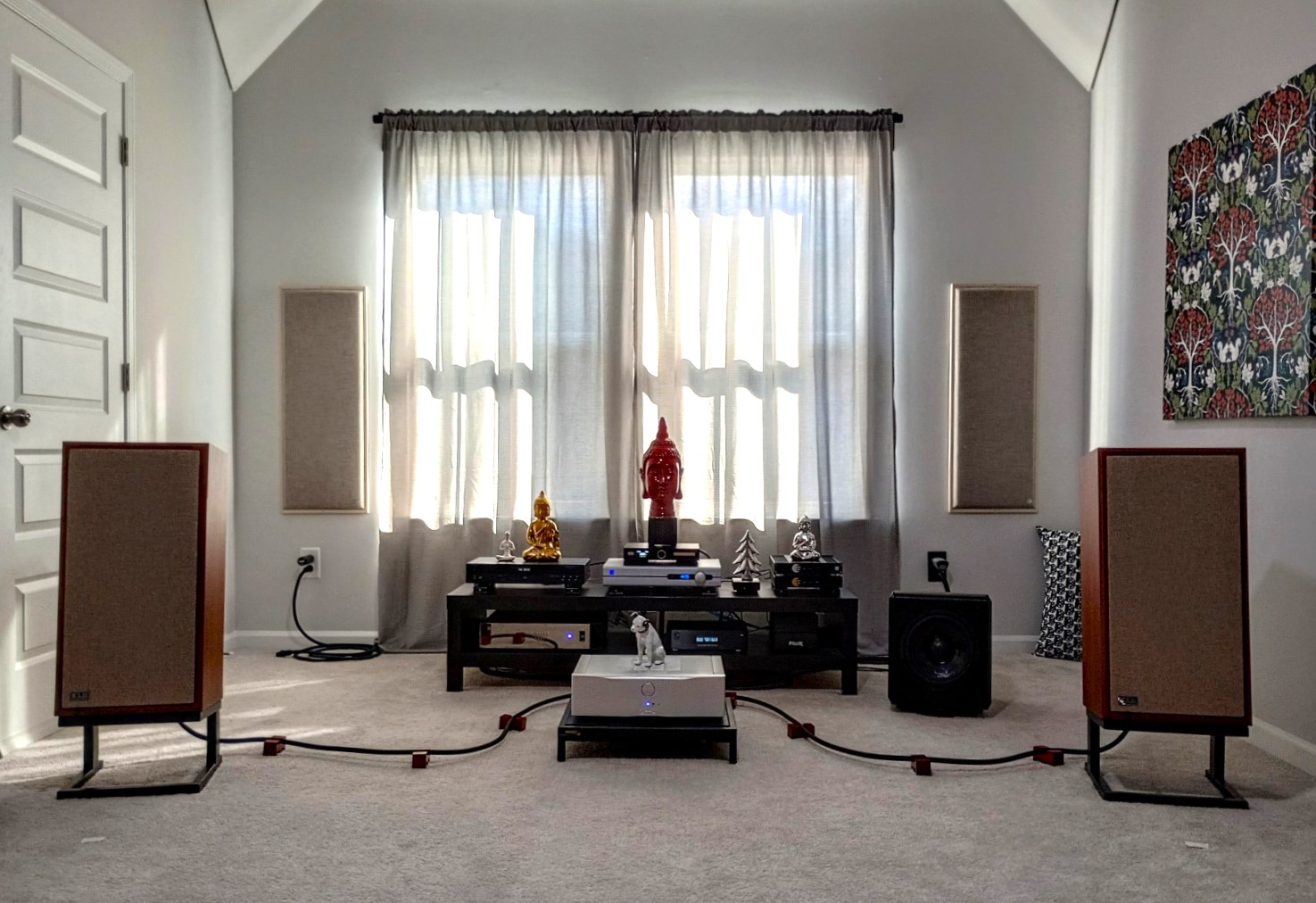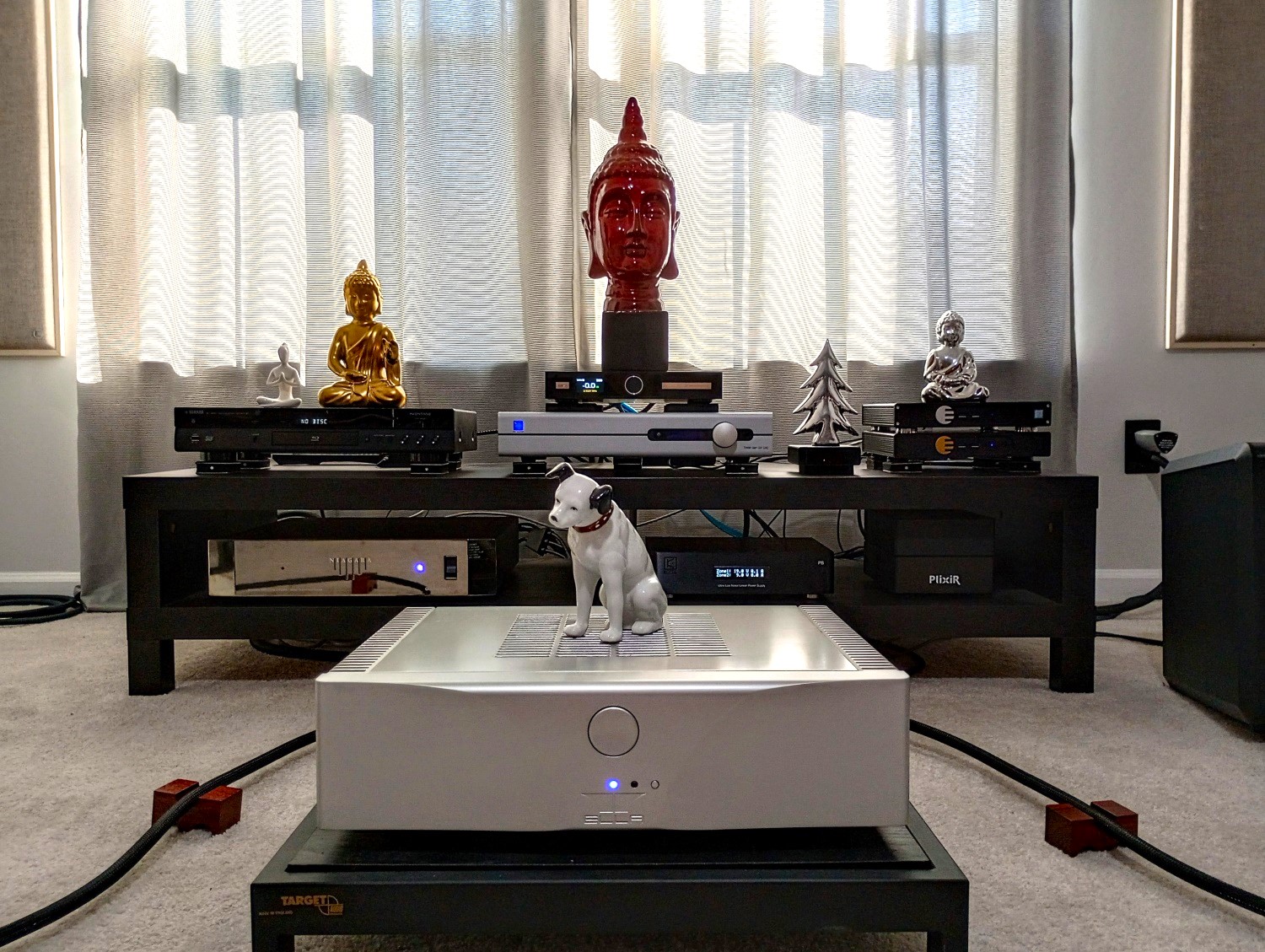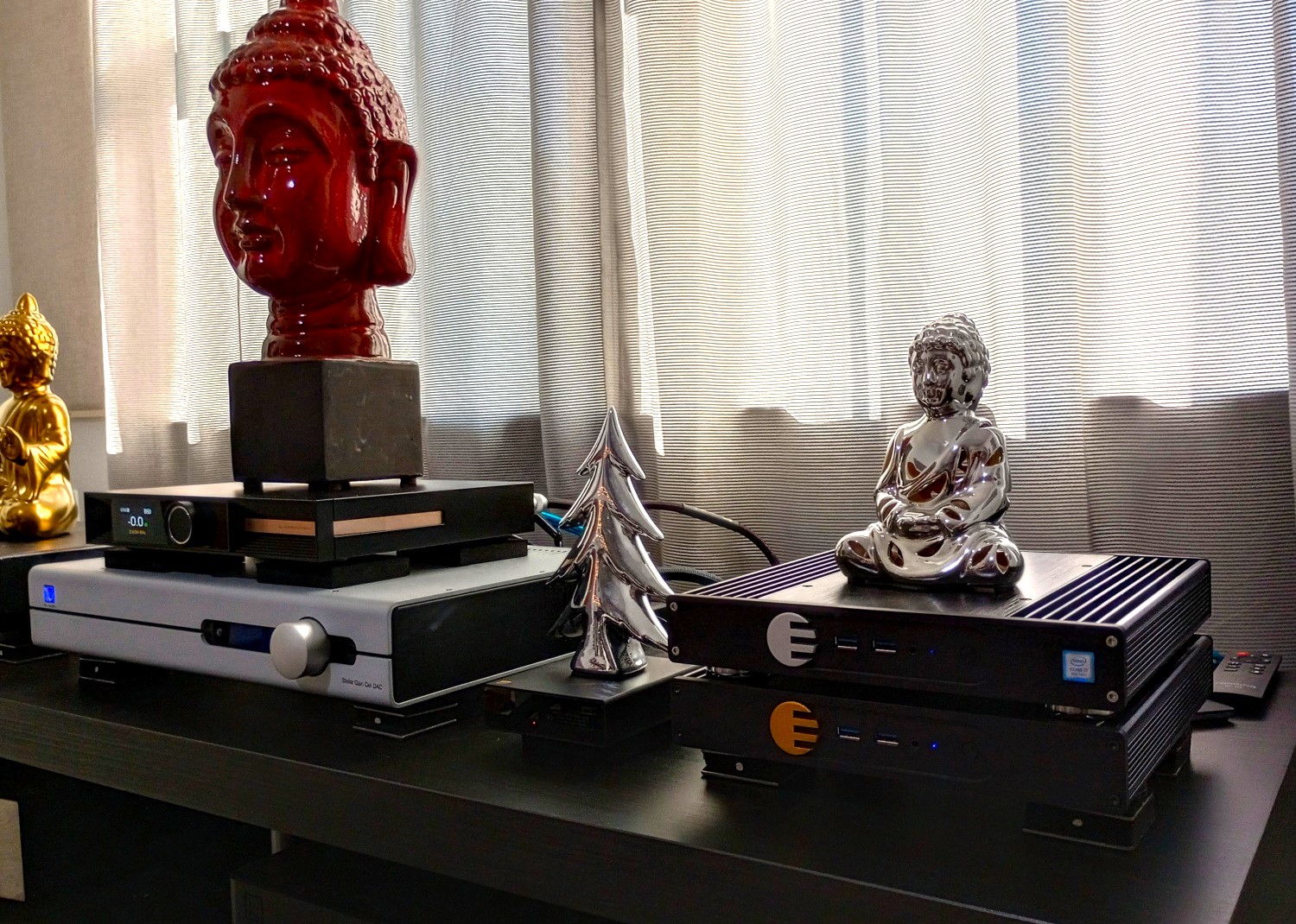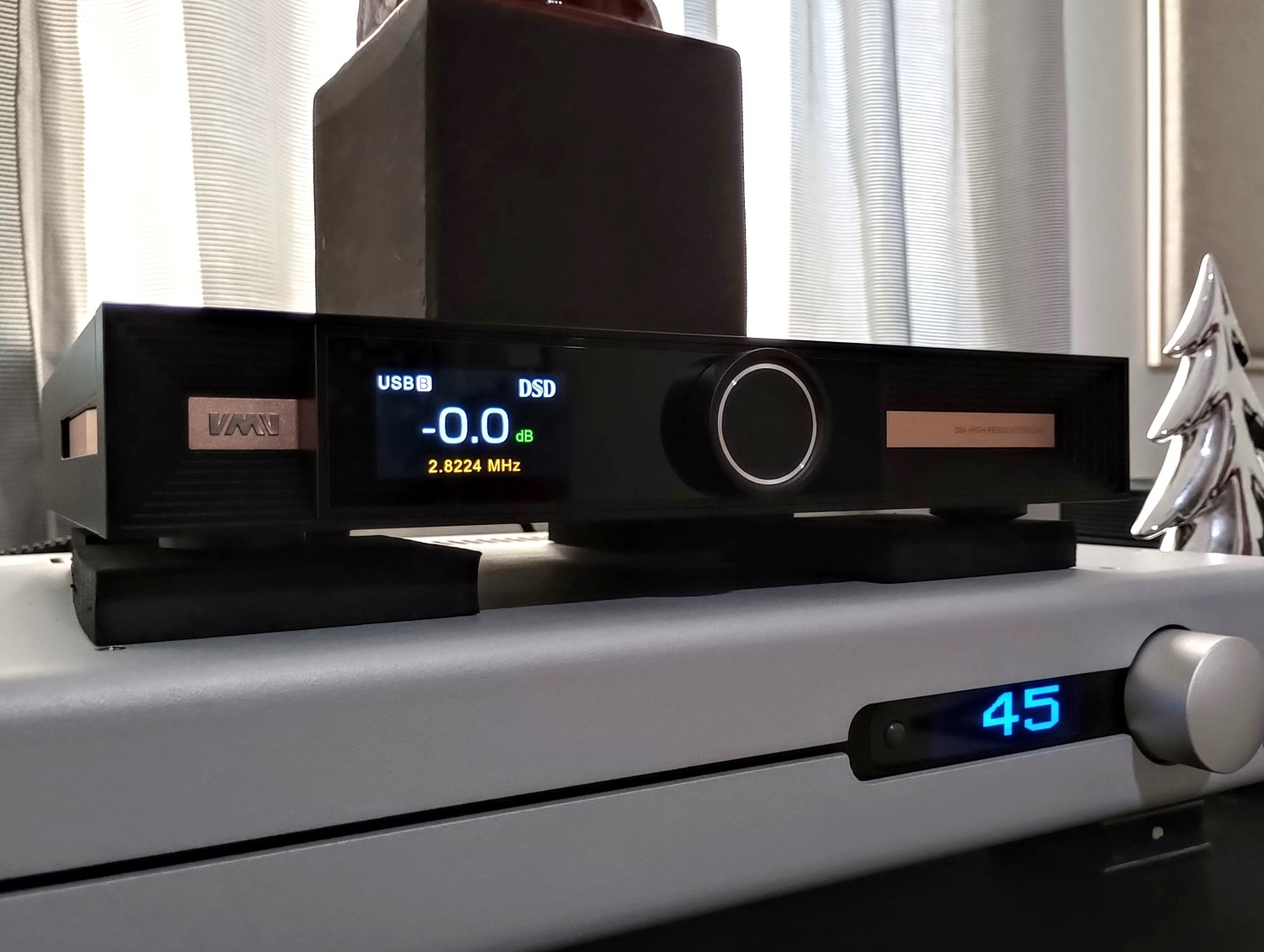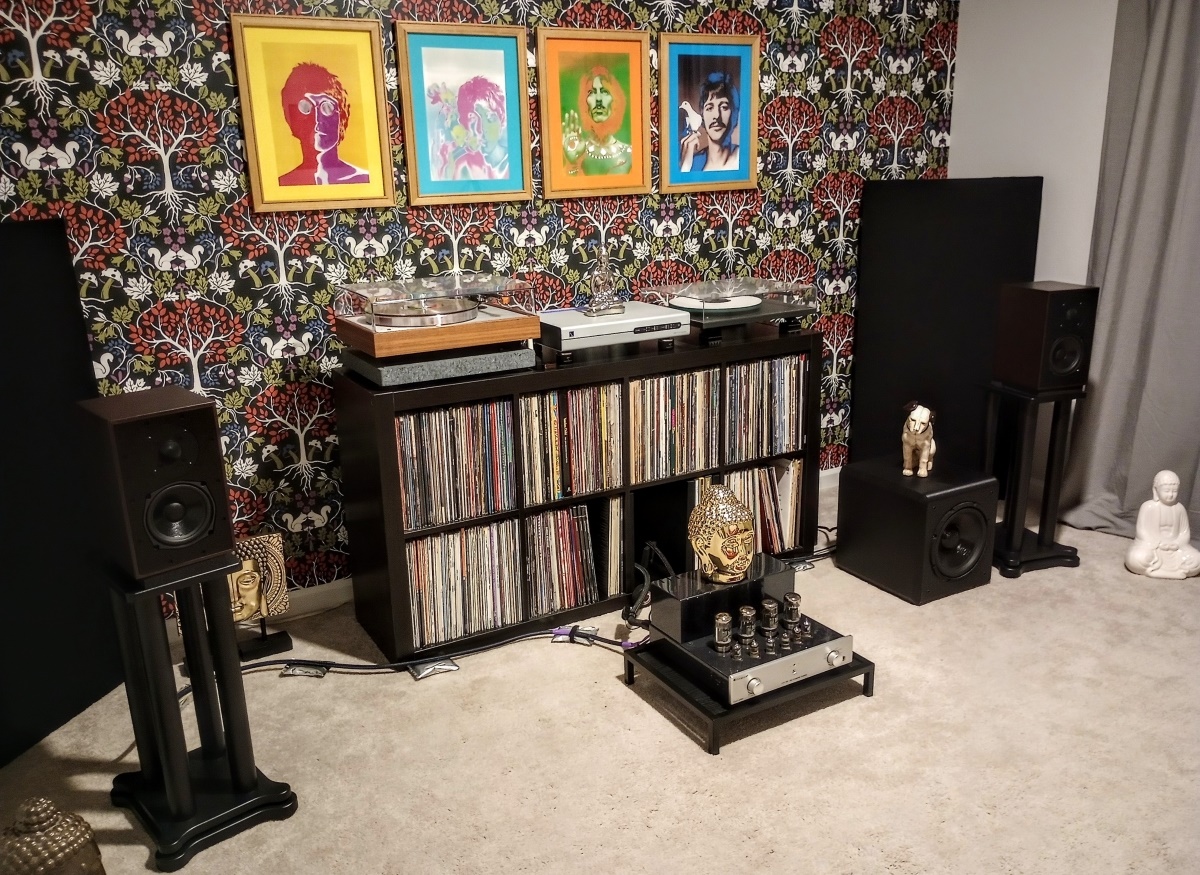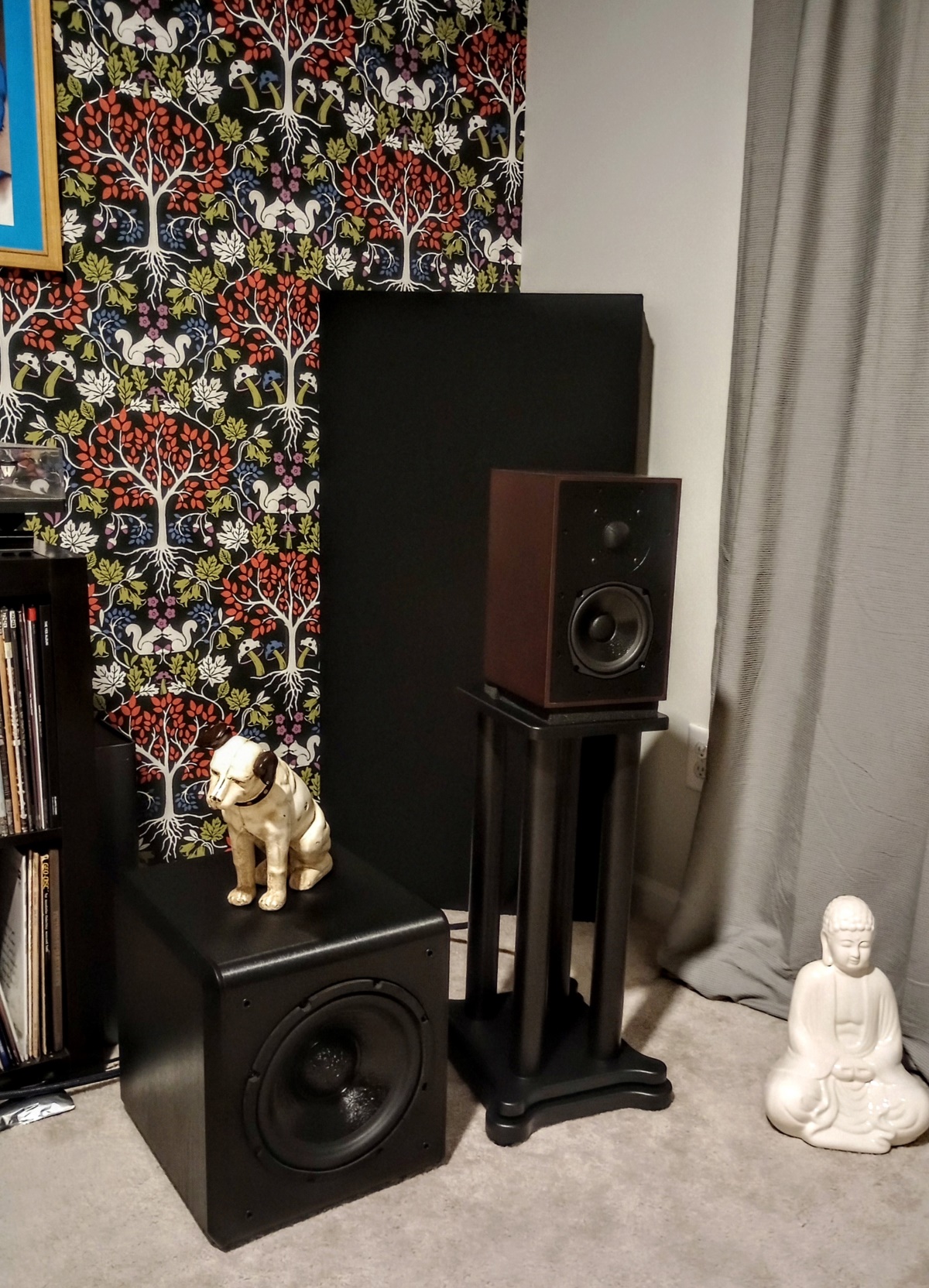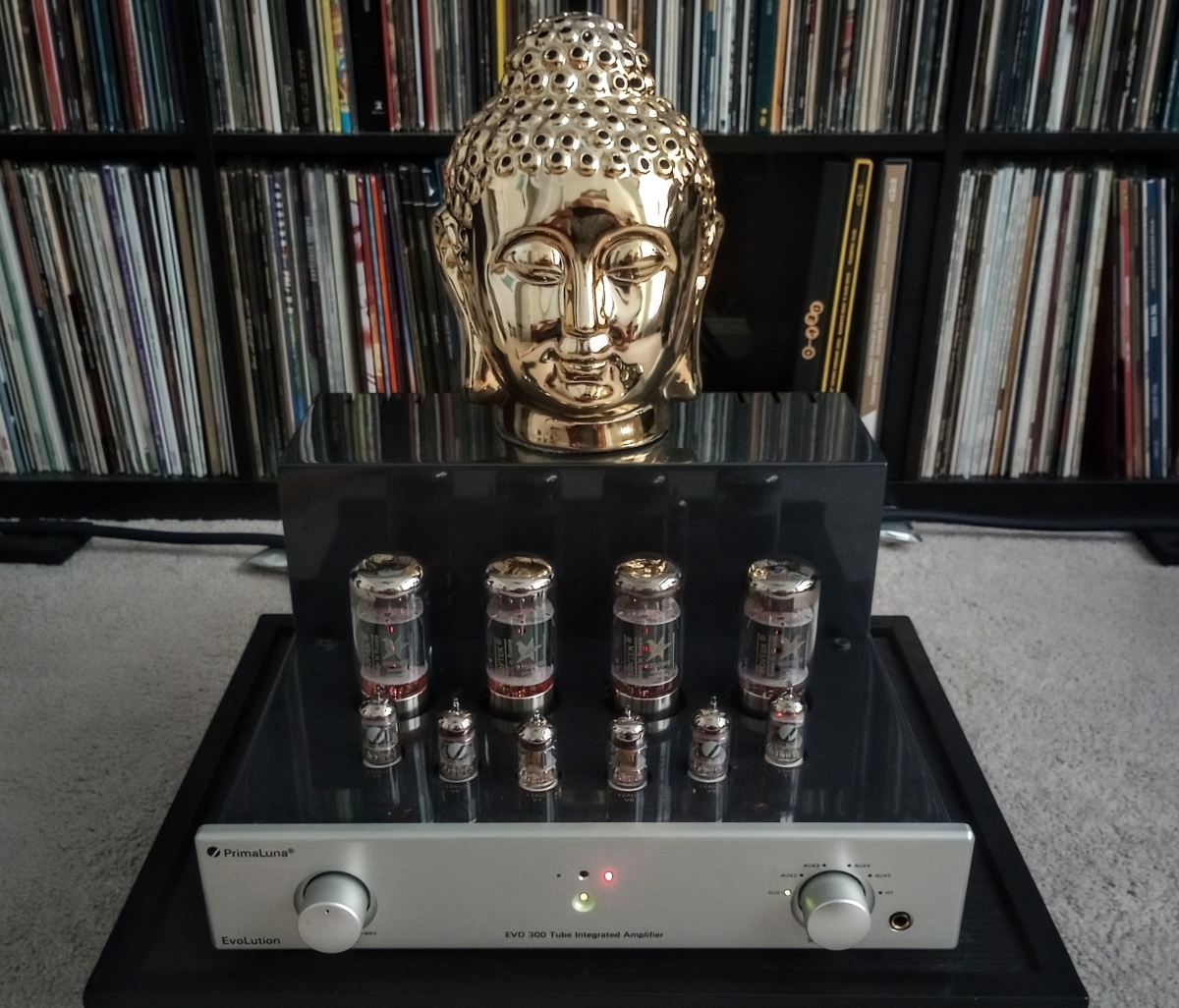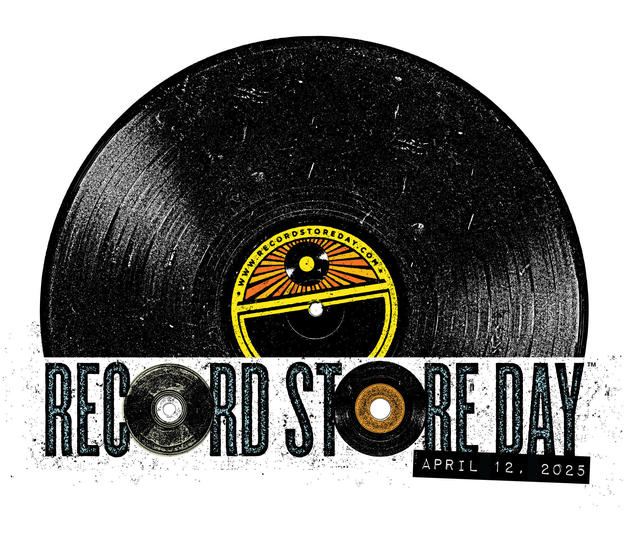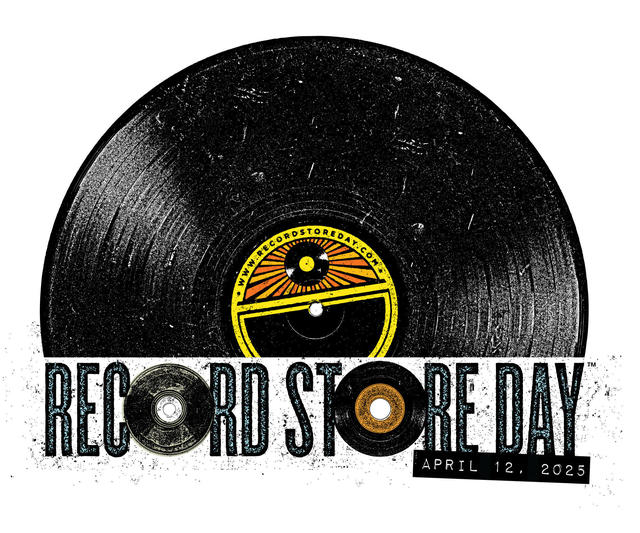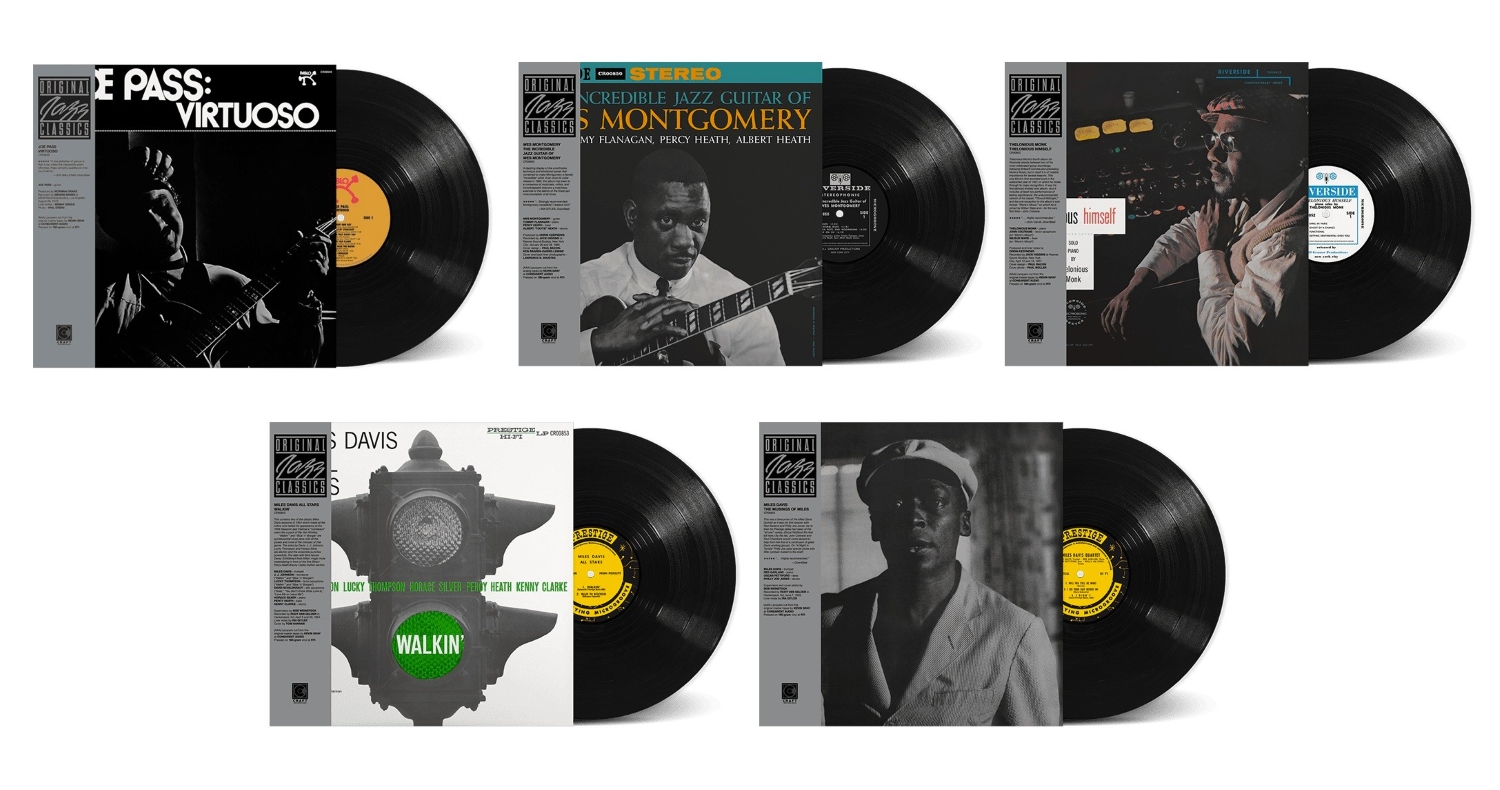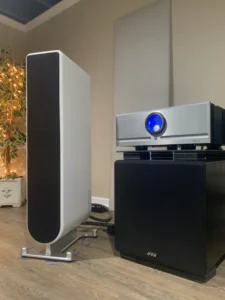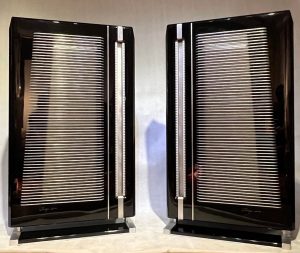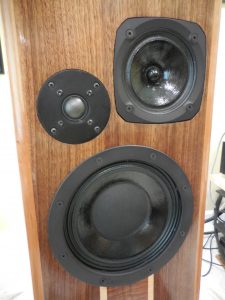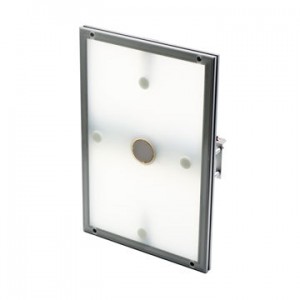I've had the "Dirty Weekend" version of the Zu Audio Omens for almost five years now; retailing for right at $1K USD, they're the least expensive way to taste the Zu experience. Zu has a very liberal upgrade and trade-in policy; they're constantly improving the technology of the drivers and cabinets they employ. The "Dirty Weekend" (DW) line takes drivers that have been traded in and re-purposes them by placing them in standard Zu Omen cabinets, at a price that is significantly lower than the built-to-order Omens ($1500-$2K, depending on finish). Zu's drivers all share a common architecture, so it would be totally within the realm of possibility that the Omen DW's could contain drivers originally designed for much more expensive Zu loudspeakers. I've been totally under that impression from the moment the Zu DW's first arrived. Some research on the web seemed to indicate that the 10-inch drivers used in my incarnation of DW's possibly were the same ones used in a then recent version of the Zu Druid. At the time, the Druid was Zu's top-of-the-line loudspeaker, retailing at close to the $5K mark.
I've had this love affair going on with the Zu Omen DW's; I feel that they play at a level far beyond what one would logically expect of a loudspeaker with high-end pretensions based on their modest price point. And they play nicely with all genres of music; I find them very musically satisfying, ranging through jazz, classical, rock, and even metal. They project a very believable image width and depth, and are very honest in their portrayal of the source. They're easy to drive; I'm currently powering them with the Emotiva XPA-1L Class A monoblocks, whose 35-watts will easily drive the Omen DW's to levels in excess of 100dB without strain. Acoustic music is presented with plenty of detail, but they'll also rock the house when required. I've never yet felt that they've run out of gas with anything that I've thrown at them, even at ridiculously loud levels. The Zu "house sound" may not be for everybody; but in my experience with them, and with proper room setup and amplification choice, they just disappear in the room, allowing you to focus on the music.
The Zu topology across most of their speaker line employs a 10-inch full range driver that's paired with a supertweeter of varying configurations. The supertweeter is jumpered directly off the full range driver's terminals, with only a capacitor and perhaps a resistor follower between them to create the proper integration between the two. The Omens don't represent the absolute at either end of the frequency spectrum, but with decent bass down to around 35Hz, and when paired with a good sub (or two), they give me everything I need to be happy. Barring a lottery miracle, they'll probably be the last pair of speakers I'll ever own.
A couple of years ago, Zu announced new upgrades across their available range, with newly improved Nanotech drivers and Clarity capacitors on the supertweeters. I briefly toyed with the idea of upgrading the DW's, but eventually decided against it—besides, I've already got drivers that originally came from a much more expensive set of speakers, right? I reached out to Sean Casey at Zu, inquiring about his opinion on the supertweeter cap upgrade, and he strongly suggested it. I could get a pair of the Clarity caps, pre-wired from Zu for around $70, and it'd take about an hour to perform the surgery myself. Not being entirely certain of how much the supertweeters actually contributed to the overall sound, I chose to go down a different path.
Let's step back in time, in what now seems like another lifetime, I once was totally enamoured with ESS loudspeakers and their folded-ribbon, Heil AMT high frequency drivers. I really, really loved that Heil high frequency sound. However, they didn't really take the audio world by storm, and sort of faded to the margins of the mainstream by the mid-eighties. But with a significant passing of time since then, and the expiration of the original Heil patents, the Heil drivers (and variants of them) have started popping up everywhere at DIY shops like Madisound and Parts Express. I had attended the Axpona show in Chicago a couple of years earlier, and there were AMT-based systems everywhere. Hearing the AMT's there really took me back to what I loved so very much about them. So I ordered a pair of AMT drivers and the necessary caps and resistors, built my own enclosures, and voila: AMT supertweeters! Sean gave me the cap and resistor values that would match the DWs current tweeter, and that would allow me to simply jumper them off the Omen's speaker terminals. The Clarity caps I would need were about $35 each; I went to the Humble Homemade Hifi website, which is one of the most exhaustive surveys of capacitors that exists. Parts Express carried the German-made Audyn Super caps, which came reasonably close in HHH's rating system to the Clarity caps, and for only $10 each. Ever conscious of the budget, I pulled the trigger and went with the Audyns.
I was pretty happy with the setup for a couple of years, but during some recent system tweaking, I pulled the old ratshack sound level meter out of storage and was taking some SPL measurements. When for some unknown reason, I put on a test tone and took some up-close measurements of the individual drivers, including the AMT's. To my dismay, the AMT's measured a full 6dB lower than everything else. A 3dB increase in SPL essentially translates into a perceived doubling of the loudness level; that inversely translates into my AMT supertweeters playing at approximately one-quarter the loudness level of the other drivers. For all practical purposes, I wasn't hearing them at all.
I immediately unplugged the AMTs, and started seriously listening to the Omens as shipped from Zu. Yeah, I was pissed off, but I still love the sound I'm hearing from the Omens. The 10-inch full range driver carries most of the load in the Omens; it handles all the bass content and the uber-important mid-range information. But the frequency curve begins to roll off somewhere around 12kHz, so the Zu supertweeter does carry most of the high frequencies. Maybe a smoother transition from the full range to the supertweeter might make a difference. Maybe the whole AMT thing was just a pipe dream.
My involvement in audio comes mainly from a "love of music" perspective; I have very little background in physics and its application to sound reproduction. In fact, at the small college I attended, I worked a job for a while as part of my tuition assistance program as a lab assistant in the physics lab, setting up experiments for the grouchy, ex-Marine professor. Unfortunately, my main interest in the job was getting to know my rather fetching fellow lab assistant much, much better, and by whatever means necessary. That left scant time for me to manage my paid lab duties, and I was summarily dismissed. I failed at the job, and I failed miserably at approaching her. Later in life, I've gained a fair amount of knowledge about sound and the construction of crossover networks, but the AMT experiment obviously needs a lot more investigation into driver selection and capacitor values.
I spent some time pondering what I could do to improve my supertweeter situation, and over the course of several days, ended up following a link to John Darko's website, Darko Audio. He owns a pair of Zu Soul Mk. IIs, and had just performed the Clarity cap upgrade. I did more research, and discovered that all of the Zu drivers are sourced from Eminence in Kentucky, and as part of the latest Omen upgrade, the tweeter was being replaced with the Eminence ASD 1001. Which is the same tweeter used in Darko's Soul Mk. II, which retails for $2600 vs. $999 for my Omen DW's. A visit to the Eminence site showed that the ASD 1001 sells for $35 each, and add in an extra $35 each for the Clarity caps. That's only $140 total for quite an upgrade.
At that point, I started thinking that perhaps I should take the first step and disassemble the Omen DW's to have a look at the parts actually involved. Two things immediately jumped out at me: 1) the 10-inch full range driver in my DW was, in fact, the Zu 260FRD G2-08, which was the same driver used in the older Druids (I knew it!); and, 2) the supertweeter was the Eminence APT 50, a compression driver, and it's basically set up in a quasi-horn configuration. The APT 50 drivers in my Omen DW's had the magnet assembly coated with a thick layer of epoxy (as is Zu's process) for resonance control. They also employ Kapton voice coil formers, Phenolic diaphragms, operate from 3.5kHz to 20kHz, and sell for $30 each. The ASD 1001 supertweeter is an extended-frequency driver, and employs an aluminum voice coil former with a titanium diaphragm. It's used stock in newer Zu speakers (like the upgraded Omen and Soul, however, they take time to closely match the drivers), operates from 2.5kHz to 25kHz, and only sells for $5 more than what I already have in the Omen DW's.
I also took a look at the crossover parts that I'd used with the AMT's, and quickly came to the realization that I already had a pair of highly regarded caps on hand of the correct configuration. I went back to the HHH site and read through the information again; the guy there basically loved the Audyn caps, and felt they were highly musical and an outstanding value for such little money. Another realization hit me: I've got these really decent caps on hand, they're the correct value, and they've been burning in for literally thousands of hours over the last few years. If they made a difference, I'd probably hear it right away. I went straight to the workbench and grabbed all the tools necessary to make the cap swap.
So even though the prudent thing to do would have been to scrape together the $140 and replace the tweets and get the Clarity caps all at the same time, I decided "screw it!" If I don't absolutely love it, I'm no worse off than before. Mirroring Darko's impression of the cap comparison, the diameter of the Audyn cap was about ten times the size of the Erse Pulse-X it was replacing, which only got a mid-grade rating and very faint praise on the HHH site rating. The swap-out took about an hour, but I made all the connections such that I could very easily do the full-scale replacement if I deemed it necessary. I also contacted Sean Casey again regarding the cap upgrade, and I had questions about the supertweeter connection I noticed once inside the DW's cabinets.
The black-striped ground connection wire coming off the 10-inch driver's negative terminal was wired to the Erse cap in series with a resistor, then connected to the supertweeter's red positive terminal. Then the red-striped hot wire was connected to the supertweeter's black negative terminal. Huh? Sean's response was, yes, what I was seeing was how that particular connection was wired for correct phase response at that time in the Omen's history. Recent iterations of the Omens now employ standard hot-to-hot connection, as well as abandoning the resistor follower. Well, OK! So I wired them as received from Zu, just with the cap swap out.
I immediately felt there was a much greater sense of openness; I felt that there was a much more seamless integration between the full-range driver and the supertweeter. And it seemed to me that the imaging of the DW had suddenly gotten a lot more specific; musicians, voices, and instruments were more fully formed and with much greater realism. However, they also had taken on a certain harshness, especially with voices, I was hearing a certain sibilance that I'd never noticed before. Seriously, the Audyn caps had been in the network for years; I didn't really think any additional burn-in time would add anything to the big picture. I even pulled the drivers back out and rewired the connections hot-to-hot and minus the resistor. All the good was still there, but so was the slight harshness.
I caved in and ordered both the Eminence ASD 1001s and the Clarity caps. I would like to have ordered them from Sean, but Zu was unfortunately out of stock on the caps, and I could get the Eminence drivers from Amazon in two days with free shipping (they drop-shipped directly from Eminence). The caps came as a matched pair and overnight from Parts Connexion in Canada for an extra $7.50. I had a very gently used Denon DL-110 cartridge that I'd just bought prior to getting the new ProJect table; I sold it online for $150 (in two days!) and that covered the cost of everything. Plus, it put an otherwise not currently being used, excellent cartridge in the hands of someone who would absolutely love it!
When everything arrived, I once again pulled all the drivers, rewired everything and replaced everything—out with the old, in with the new. The new tweeters have more extended treble response than the old ones, and better power handling; however, there was still just a trace of hardness to the overall treble sound. I dug through all my boxed CDs in the back room of the basement, and located an old XLR/Sheffield test CD that was lurking there. There's this really ungodly sounding burn-in track on the disc; they recommend playing at as high a level as tolerable, and perhaps covering the speakers with blankets during the process to minimize the unpleasantness. So I did that, and also turned off both subs, which didn't need any further burn-in, anyway. This ran night and day on repeat, non-stop, for 72 hours. At about 90 or so decibels. Beth was out of town for two weeks, so fortunately she wasn't subjected to the burn-in madness!
So how was the sound now? Much better—much smoother than right out of the box. But a trace of the hardness was still there, even with the Clarity caps. Maybe more burn-in time was in order. And besides, it was time for me to return to work for three days, so three more days of burn-in! During that time period, I researched as much as I possibly could with regard to capacitor burn in, and on Darko's site, some guy commented on his article that it might take hundreds of hours to properly run the Clarity caps in. Great.
Saturday evening rolls around—let's have another listen. At this point, we have about 150 hours on the new caps and supertweeters, and everything is much, much better! In fact, at the kind of listening levels I typically run at (80 or so decibels), everything sounded really superb! The Eminence ASD 1001s are much better drivers than the APT 50s they replaced; if anything, they're even more open, revealing, and spacious, and the cap and driver burn-in is seriously helping every aspect of the musical presentation. Let's pop on something with more bass content, like a really great jazz record.
Here, once again, the wheels came off. I started noticing a heretofore unnoticed vibration coming from the REL sub—which had already required disassembly when it arrived four years ago to repair a broken transformer mount that was humming like crazy. Had that damned transformer worked its way loose again? Removing the rear plate revealed that the transformer was still rock-solid (I did a much better job than I had given myself credit for). But then turning the sub on it's top to check the down-firing main driver revealed that most of the hex-cap screws holding it in place had worked their way loose. That wasn't too bad, until I tried to tighten them with an Allen wrench—all of them were stripped. Probably the handy work of an overzealous assembly line employee—dammit! I was able to get all of them out except for one, which wouldn't move in either direction, so I had to take a pair of pliers and force it to turn from the inside of the cabinet. At this point, it's way past midnight, so we'd have to see if Home Depot had any semblance of replacement screws in the morning.
Morning came, off to Home Depot, and shockingly enough—and only after digging through cases of specialty screws for about half an hour—I actually found exact replacements. Woo hoo! Home again, and subwoofer problem thankfully solved. I spent the rest of the afternoon, reveling in the great sound; we're definitely getting there and another 150 hours or so should work miracles on the overall presentation. Zu burns in all drivers before they ship; and with the DWs, you're getting drivers that could have been burned in for a remarkably long time. Buying used has never been an issue for me, and I've pushed these speakers to limits that would easily stress other brands; I've yet to hear a peep out of the full range drivers to suggest that they're even beginning to feel overburdened. So worrying what the previous owner might have done with these has never been given much of a thought. Of course, the new Eminence supertweeters have only been burned in as long as they've been connected here; a couple of weeks in and they're beginning to offer the kind of upper mids and highs I only dreamed the Omens were capable of.
When Beth arrived around 5PM and inquired what I had been up to for the last two weeks: "Oh, not much, just went to work, and farted around a bit here and there with the stereo!" If you have an earlier iteration of the Zu Omens, the tweeter and cap upgrade will offer an increase in performance that takes these speakers to a level of improvement that simply has to be heard to be believed. All the crap you read online from various sources that suggest that the supertweeters don't add enough to the overall sound to impact the performance of the Omens is, well, crap! One look at the graphs for both full-range drivers and supertweeters easily shows the importance of the HF driver to smoothing out and flattening the output spectrum. One listen to the new drivers and it's impossible to ignore the amount of sparkle added to the upper mids and highs, but the really significant improvement for me is how much more seamlessly they now integrate with the full-range drivers. This upgrade is very highly recommended—if you own older Zu Omens, it'll be the best $140 you ever spent.
Zu Audio
Images courtesy of the author, Zu Audio, and Clarity Capacitors




